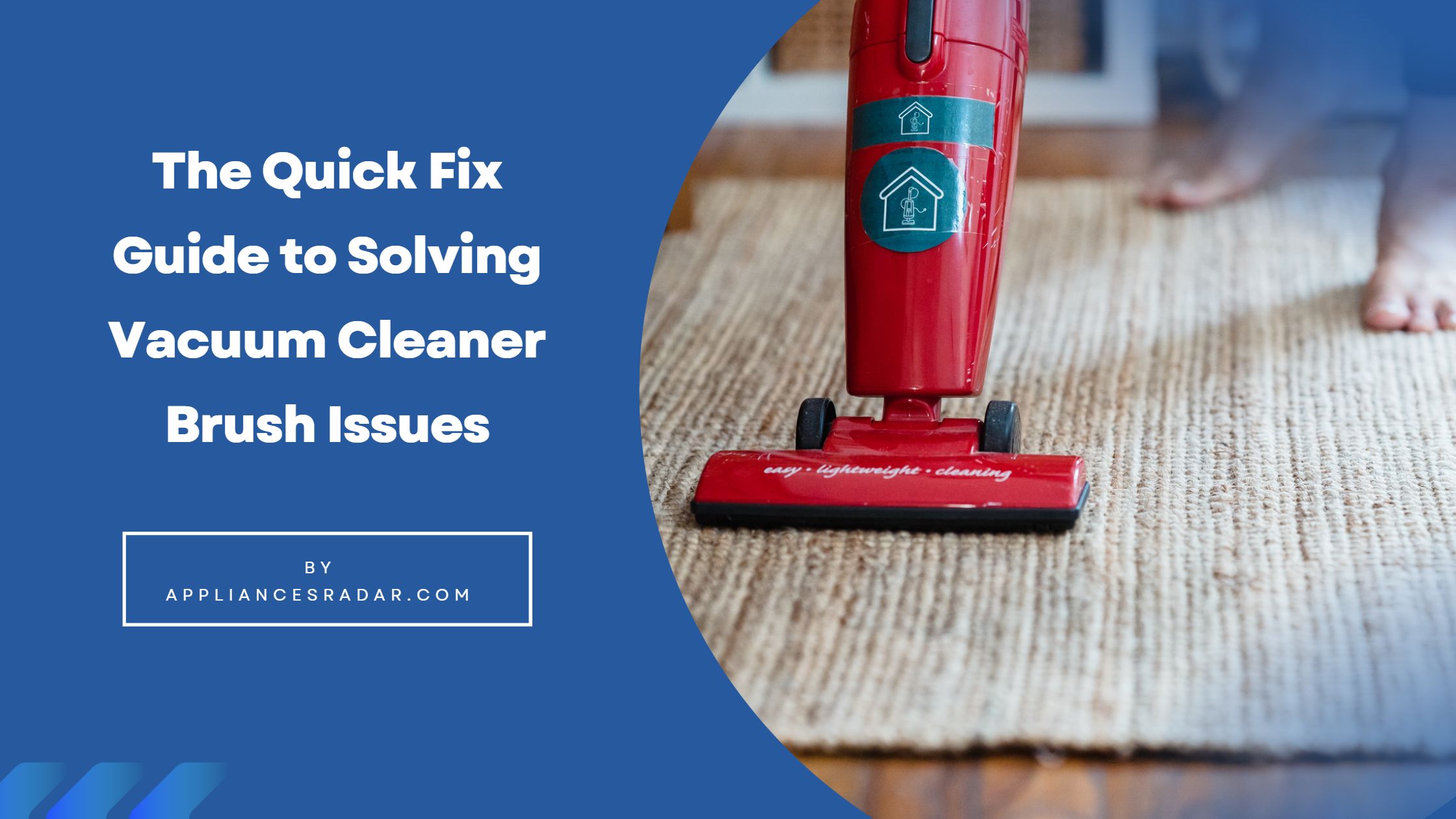
If your vacuum cleaner brush isn't working, don't worry - you're not alone. This is a common issue that many people experience.
In this blog post, we will discuss the quick and easy fixes that you can do to solve this problem. We will also provide tips on how to prevent this from happening in the future.
The Problem of Vacuum Cleaner Brush Not Working
Vacuum cleaner brushes were designed to make life easier, but malfunctioning brush rollers can complicate the house cleaning process.
Fortunately, the problem of a vacuum cleaner not working can usually be traced back to three major issues: worn out or clogged belts, clogged roller brushes, and empty or dirty dust containers.
In most cases, changing the belt will solve the problem; however, it's also important to keep an eye on any other components that might be causing a blockage or malfunction.
Regularly replacing filters and clearing out debris will help ensure your vacuum runs smoothly even with increased usage. All in all, tackling the problem of a vacuum roller brush not working is relatively easy with simple DIY maintenance tips.
The summing-up of Quick Fixes and Preventative Measures
Taking proactive steps can make a world of difference when it comes to preventing and resolving everyday issues. Quick fixes are an excellent way to address short-term scenarios, such as a leaky faucet or faulty light switch.
However, preventative measures should be taken for long-term problems. These include routine maintenance engagements, such as changing air filters, assessing the condition of chimneys, sealing doors and windows, or even developing emergency protocols for natural disasters.
Though these types of activities may seem time-consuming at first, regularly tending to them can save both time and money later on by ensuring that minor problems don’t have the opportunity to become bigger issues.
Quick Fixes for Vacuum Cleaner Brushes
1. Check the Belts, Filters, and Bag
Start by checking the belts, filters, and bags to make sure they haven't become clogged or worn down. You can easily do this task yourself once you familiarize yourself with your vacuum cleaner model's features.
2. Clear the Brushes
If the brushes are clogged with debris or hair, use a pair of scissors or tweezers to carefully remove it. Be sure to wear protective gear and keep children away from the area as you work.
3. Replace Any Necessary Parts
If any part of your vacuum needs replacing, be sure to purchase genuine parts from a reputable manufacturer. Avoid buying generic versions in order to ensure the best performance possible.
Preventative Measures for Vacuum Cleaners
1. Regularly Inspect the Rollers
The rollers should be inspected and cleaned regularly to prevent any clogs or debris buildup. This can be done by gently removing any visible debris with a soft cloth, as well as changing filters when necessary.
2. Check for Blockages
Make sure to routinely check for blockages and other issues that may prevent your vacuum from working properly. If you find any, take the necessary steps to resolve them as soon as possible.
3. Vacuum Regularly
By vacuuming on a regular basis, you'll be able to keep dust and debris at bay before they have a chance to become a problem.
Additionally, this will also help your vacuum last longer by ensuring that it doesn't need to work as hard every time you use it.
IV. Conclusion
In conclusion, preventing and resolving the problem of a vacuum cleaner brush not working is relatively simple.
By taking quick fixes such as checking belts, filters, and bags; clearing the brushes; and replacing any necessary parts, you can keep your vacuum running smoothly in no time.
Additionally, regular preventive maintenance tasks such as regularly inspecting rollers and checking for blockages can help to ensure long-term functionality and performance.
With these tips, you'll have peace of mind knowing that your vacuum will be working properly for years to come.












